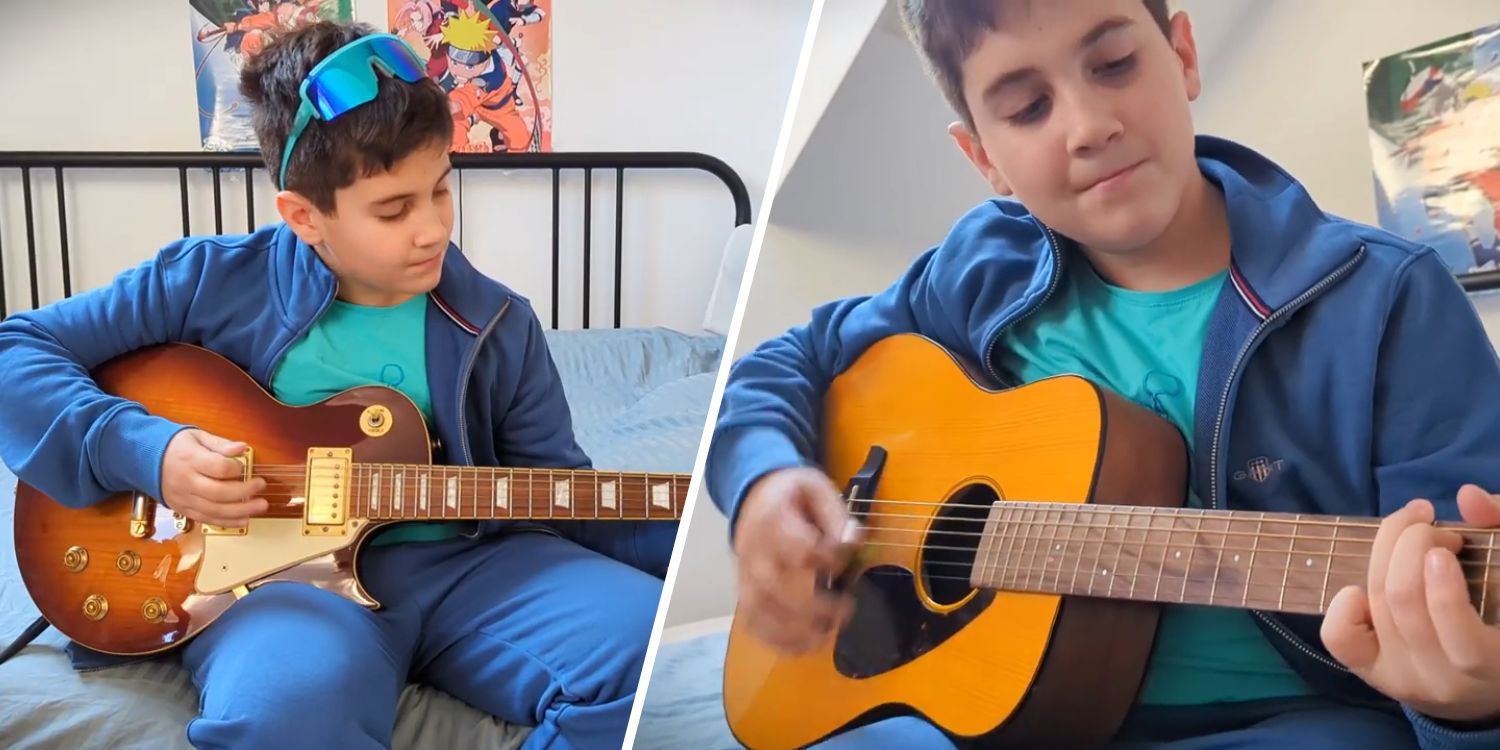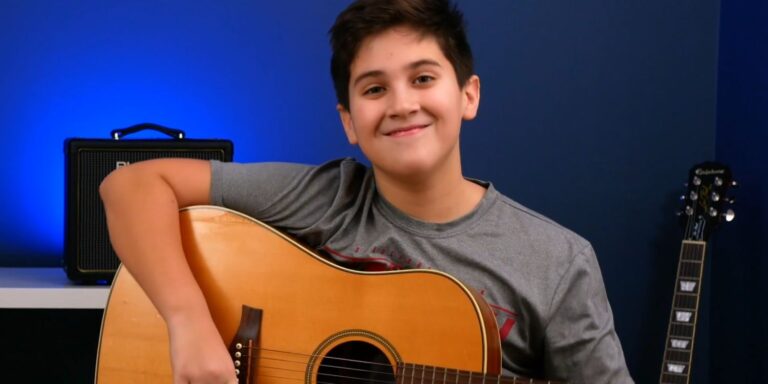After teaching guitar to many kids over the past decades, I've watched countless parents struggle with the same question: "acoustic or electric guitar for my kid"?
Most have absolutely no idea which one will actually work for their child, so they end up making decisions based on:
- price,
- what looks "nicer," or
- whatever the guitar shop employee happens to recommend that day...
The truth is, the wrong choice doesn't just waste money.
It can kill your child's musical dreams before they even get started, while the right choice creates a foundation for lifelong musical joy.
By the end of this article, you'll know exactly which guitar is right for YOUR kid and your family situation, no more second-guessing yourself at the music store.
The Quick Answer (Because I Know You're Busy)
For most kids just starting out: Go acoustic, steel stringed. It's cheaper, simpler, and perfect for testing the waters without a huge commitment.
If your kid is 11+ and already obsessed with rock music: Get the electric with a starter package. Their excitement will carry them through the learning curve.
But as you would expect, it's not quite that simple. Let me break down what I've seen happen with kids over the years.
Why I Love Acoustics (and Your Kid Might Too)
Let's be real here, most parents are in "testing the waters" mode when their kid first shows interest in guitar.
You're probably thinking:
"Is this just another thing they want to try and forget in 2 days? I don't want to spend much on that."
Every parent ever
This is totally fine.
And the solution?
A steel stringed acoustic guitar is basically the Honda Civic of guitars: reliable, affordable, and gets the job done without drama.
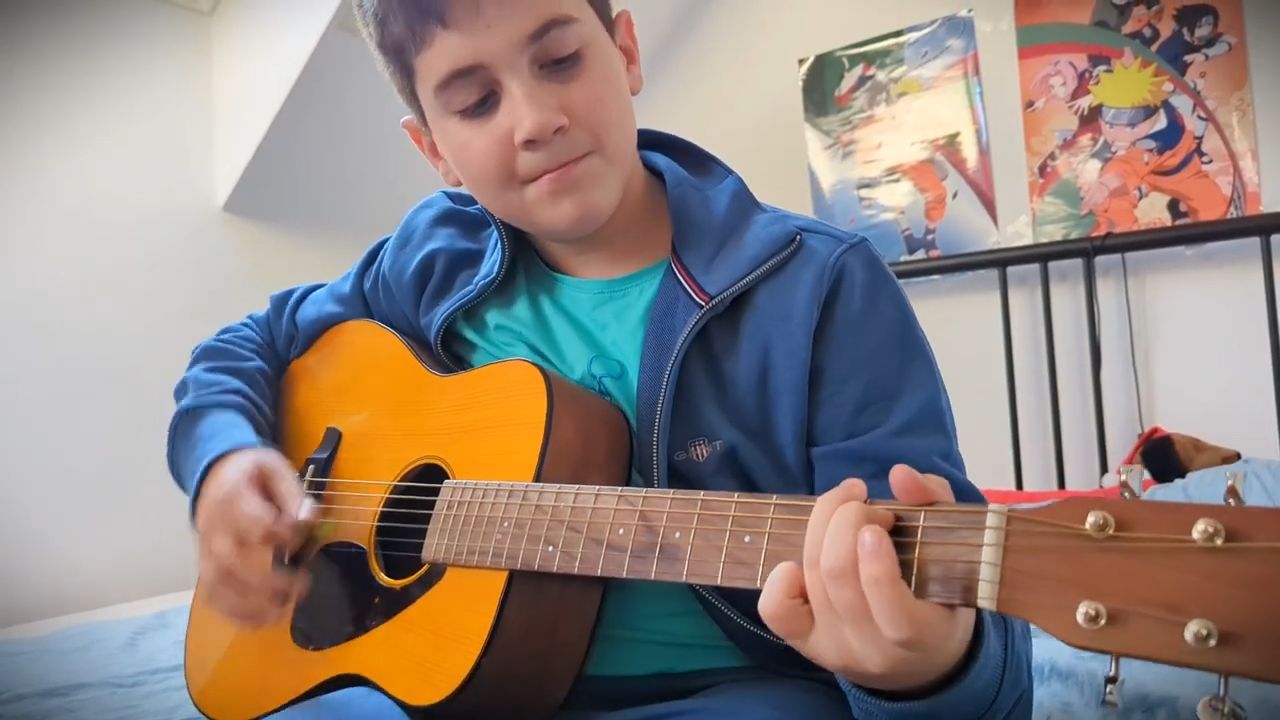
Here’s what most music shop owners won’t tell you: you can snag an acoustic for as little as the price of a couple pizzas. Seriously, I’ve had students whose parents found great deals at garage sales and charity shops for $30. And if your child loses interest, you won’t be out much.
But if you have bit of a budget, here are 3 acoustic guitars I can recommend.
|
# |
Guitar |
What you should know |
Size |
Details |
|---|---|---|---|---|
|
1. |
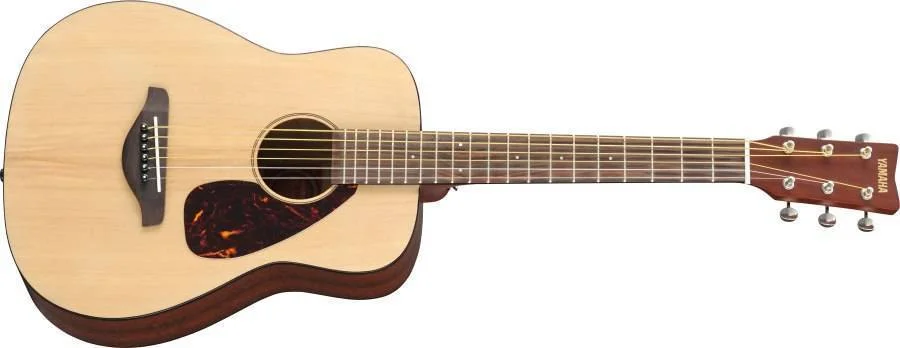 |
Yamaha FG JR1 or JR2 |
3/4 scale |
Amazon |
|
2. |
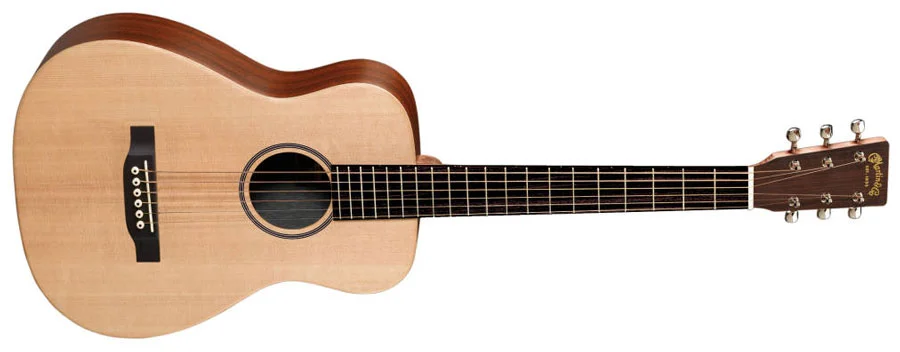 |
Little Martin LX1 |
10/11 scale |
Amazon |
|
3. |
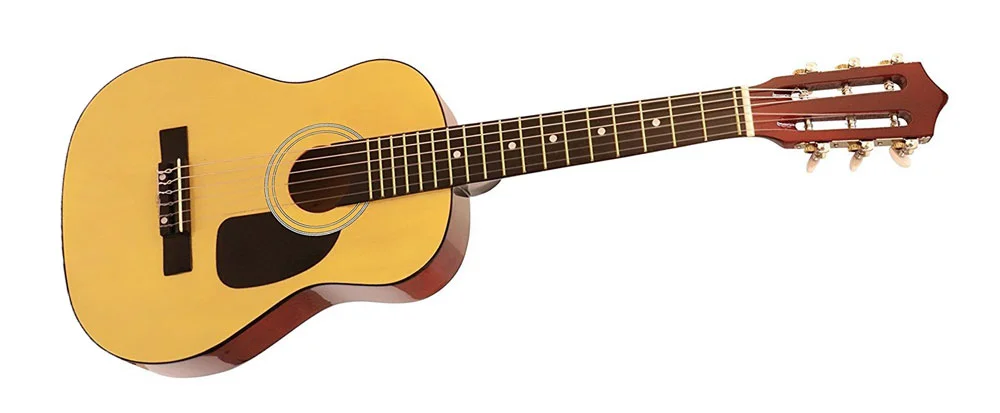 |
Hohner HAG250P |
1/2 scale |
Amazon |
Oh, and don’t forget the sizing hacks. I tell parents all the time:
- Ages 4–7: Half-size acoustic. It won’t swallow them whole.
- Ages 8–12: Three-quarter size. Fits like a glove.
- 12+: Full size, if they’re tall enough to wrestle it.
Get the wrong size, and your child could be fighting the instrument instead of playing it. Nothing kills motivation faster. (Well actually, having teenagers play Twinkle Twinkle does.)
My son Milan started on the Yamaha at age 9. I swear he bonded with that thing harder than his favorite stuffed animal.
Another great thing about acoustic guitars is that acoustics are true “plug and play”, and by that I mean you don't need anything else. No fussing with amps or wires. You tune the guitar with our online guitar tuner, they strum, and you get instant living-room concerts.
After some lessons of course.
Now, about the “ouch!” factor. Some kids quit guitar because those first few weeks hurt their fingers. No joke. Nylon strings on a classical acoustic are more forgiving, but I don't like them, as they really restrict the type of music you can play. Most kids just don't dig classical music.
Stick with steel stringed acoustics like the ones I listed, they will get used to it if the lessons are right and the motivation is there.
The Electric Guitar Route - When Rock Dreams Take Hold
Now, let's talk about when electric might be the right choice from the get-go.
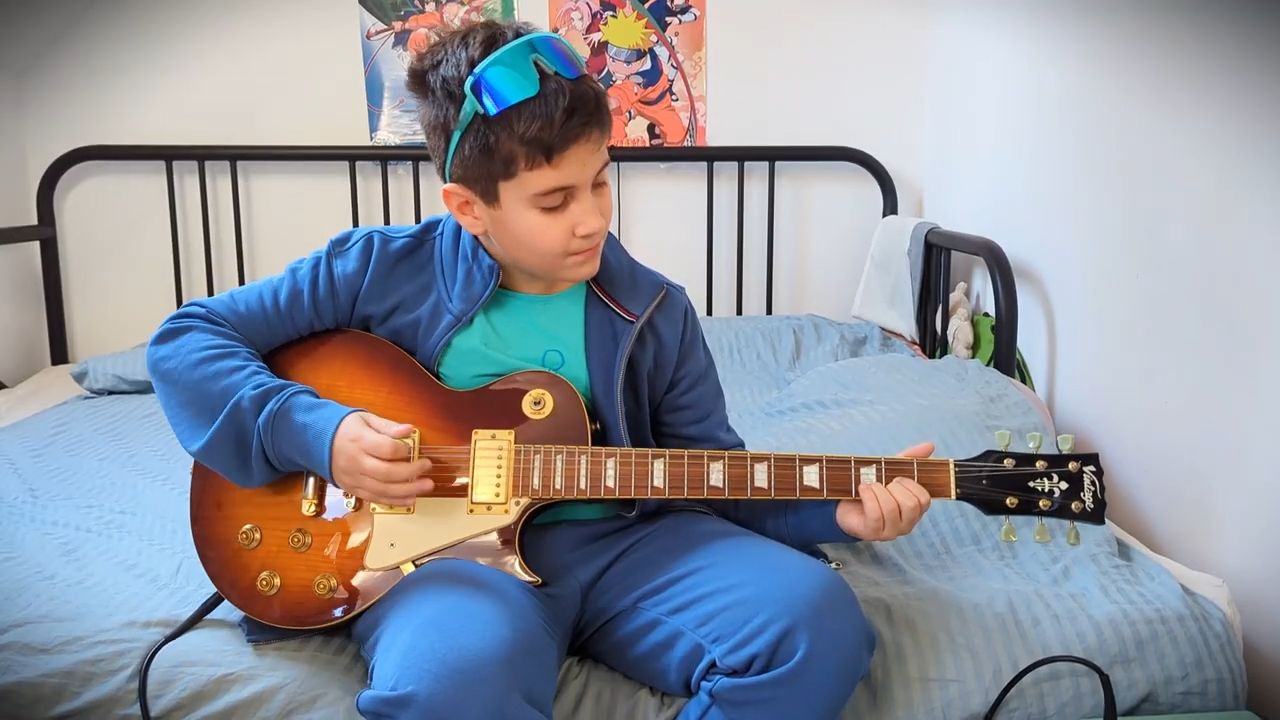
Around 11-13, mostly based on their surroundigs, kids start developing their own musical taste. If your child is in this age range and they're absolutely obsessed with rock, metal, or pop music, fighting against that preference will actually hurt their motivation.
I had a 13-year-old student whose parents insisted on acoustic first, even though the kid listened to AC/DC since his dad loved classic rock. Three months of frustration later, they switched to electric, and suddenly he was practicing two hours a day.
You've got to meet kids where their passion is.
The Complete Package Investment with Electric Guitars
Electric guitars do require more upfront investment, but here’s a tip: most starter electric packages aren’t as pricey as you fear. For around $250, they include everything you need:
- The guitar itself
- An amplifier
- Connecting cable
- Guitar strap
- Sometimes even picks and a basic lesson book
These packages are actually pretty good value when you add up what you'd pay for everything separately.
They save on the quality of the guitar and the amp, but hey, this is just about testing the waters.
If it doesn't work out, you can sell it for about 75% of what you paid for it as "like new".
Here are two I can recommend, you can get both in different colors and as a stand alone guitar or a package:
|
# |
Guitar |
What you should know |
Size |
Details |
|---|---|---|---|---|
|
1. |
 |
Squier Mini Strat |
3/4 scale |
Amazon |
|
2. |
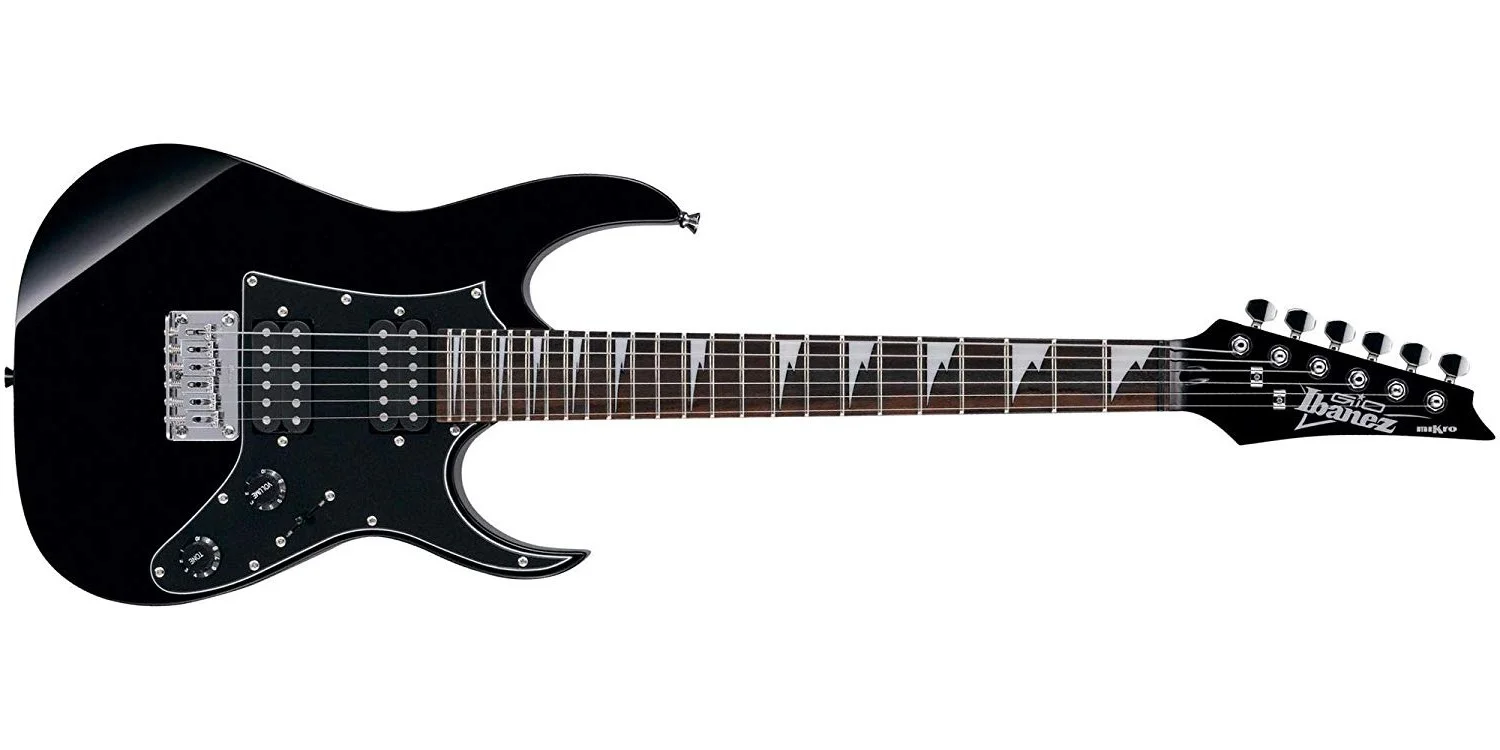 |
Ibanez Mikro |
3/4 scale |
Amazon |
Size Options Exist Here Too
Just like acoustics, electric guitars come in 3/4 sizes for younger players, but they are relatively smaller than acoustics. Don't assume electric automatically means "too big for kids" - that's simply not true anymore.
For example, my son Milan started playing full sized electric guitar (Les Paul clone) at 10-11, and it wasn't too large for him.
The Truth About Transferability
Here's something that might surprise you:
Learning on acoustic or electric doesn't lock you into one path forever.
Both guitars have the same number of strings, the same fret layout, and the same chord shapes.
I've had students start on acoustic at age 8, then seamlessly transition to electric at 12 when their musical tastes developed.
I've also had rock-loving 10-year-olds start on electric and later fall in love with acoustic fingerpicking.
The skills transfer beautifully in both directions. Actually better going from acoustic to electric, since electric strings are easier on the fingers.
Real-World Teaching Examples
Let me share a few scenarios I see regularly:
The "Let's Test This Out" Family: 8-year-old girl showed mild interest in guitar. Parents bought a $40 3/4 acoustic from Facebook Marketplace. Six months later, she's playing simple songs and eager for more. Acoustic was perfect for testing genuine interest.
The Rock-Obsessed Pre-Teen: 12-year-old buy I mentioned already wanted to play like his favorite band, AC/DC. Parents tried acoustic first, total disaster. Switched to electric starter package, now he practices daily and joined the school band a year later. Follow their passion.
The "Music Loving" Kid: 9-year-old guy started acoustic, loved it, then discovered rock music at 11. Now he plays both regularly and says they're like "different voices for different songs." Perfect example of how skills transfer.
Consider These Factors
Family Budget: Starting with acoustic gives you room to upgrade later if their interest grows.
Age and Development: Under 10? Acoustic is usually your safest bet. 12+? Their musical preferences matter more.
Practice Environment: Apartment living? Acoustic's natural volume control is nice, but an electric can be plugged into headphones to play almost silently.
Your Child's Personality: Some kids thrive on the "cool factor" of electric guitars. Others prefer the simplicity of acoustic. You know your kid best.
My Final Recommendation
If you're still unsure, start with acoustic.
Here's why:
- It's the lower-risk option that still delivers real musical satisfaction.
- Your child can learn all the fundamentals, build finger strength, and develop musical understanding.
- If their interest grows and their musical taste develops toward electric styles, you can always add an electric guitar later.
And above all else, remember this: the best guitar is the one your kid wants to play. If they’re grabbing it without reminders, you nailed it. If it’s gathering dust in the corner, try a different approach.
The goal isn't to make the "perfect" choice. It's to make a choice that keeps your child excited about making music.
In my years of teaching, I've seen kids fall in love with guitar on both acoustic and electric. I've also seen promising students just quit due to other interests.
But either way, the magic happens when they start enjoying what they play, not necessarily which instrument they start on.
What questions do you still have about choosing your child's first guitar? Let me know in a comment below.

